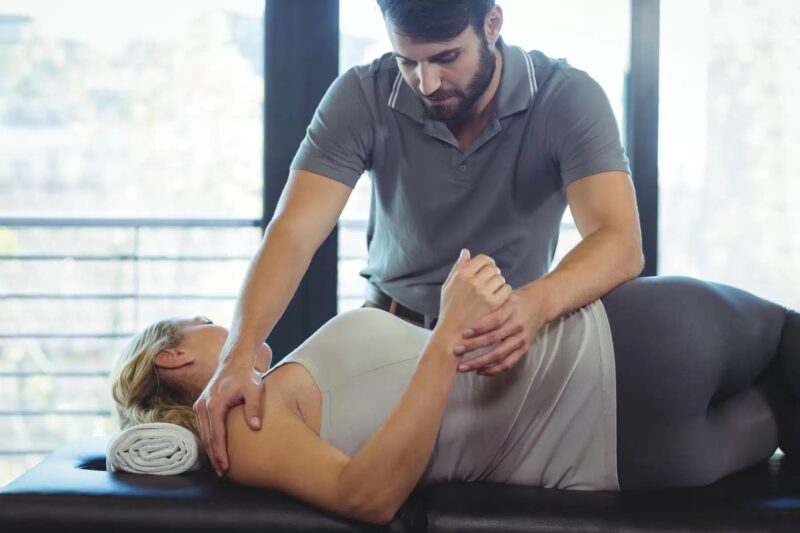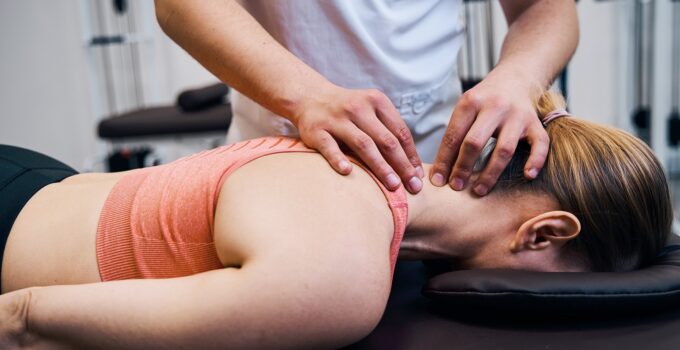Completing your treatment plan is a big win — especially when it comes to chronic back pain. But the real work often begins after you leave the clinic. Long-term relief depends on what you do daily to support your spine, posture, and mobility.
Whether you’ve finished rehab or chiropractic sessions, following post-treatment best practices is key to maintaining progress. If you’ve been working with The Woodlands back pain doctor, these tips will help you protect your investment in your health.
1. Stay Consistent with At-Home Exercises

Source: nsilvalegal.com
After treatment, your provider likely gave you a set of exercises to strengthen your core, glutes, and back muscles. These are more than just “homework” — they help reinforce the improvements made during care.
Even just 10–15 minutes a day can make a noticeable difference. Focus on movements that improve flexibility, balance, and spinal support. If anything feels off, don’t push through pain — reconnect with your provider for guidance.
2. Prioritize Posture Throughout the Day
Poor posture is one of the most significant contributors to recurring back issues. Whether working at a desk, driving, or using your phone, keep your spine aligned and your shoulders relaxed.
Use ergonomic chairs, adjust your monitor to eye level, and take standing breaks at least once an hour. Most patients who see the Woodlands back pain doctor are surprised at how quickly posture improvements can reduce strain and fatigue.
3. Keep Moving (But Mindfully)

Source: mindful.org
Movement is medicine — especially after treatment. Walking, swimming, yoga, and low-impact workouts can help you maintain mobility and prevent stiffness.
However, avoid sudden heavy lifting, twisting, or high-impact sports unless cleared by your provider. Being active is crucial, but so is being smart about moving. A gradual return to physical activity helps protect healing tissues and keeps your progress steady.
4. Don’t Skip Regular Check-Ins
Even if you feel great post-treatment, periodic check-ins can help catch minor issues before they grow. Visiting the Woodlands back pain doctor for maintenance care can support spinal alignment, address new tension, and reduce the risk of relapse.
Consider these appointments preventive care — a tune-up for your spine that helps you stay pain-free and functional in the long run.
5. Listen to Your Body

Source: onepeloton.com
Pain, stiffness, or fatigue are your body’s way of signaling that something needs attention. If symptoms return, act early. Ignoring discomfort can undo the progress you’ve made and lead to re-injury.
Stay aware of your limits and practice good recovery habits like rest, hydration, and stretching. Your body thrives on routine care — even after treatment ends.
6. Nutrition and Hydration for Spinal Health
What you eat and drink daily can influence how your back feels. Muscles and connective tissues rely on proper nutrients to repair and stay resilient. A diet rich in lean protein, leafy greens, and foods high in omega-3s can reduce inflammation and promote recovery.
Hydration is equally important. Discs in your spine are made up of water-rich tissue. When you are dehydrated, these discs can lose flexibility and become more prone to pain. Aim for steady water intake throughout the day instead of gulping large amounts only at once.
Table: Key Nutrients for Back Health
| Nutrient | Why It Helps | Food Sources |
| Calcium | Maintains bone density | Dairy, leafy greens, almonds |
| Vitamin D | Supports calcium absorption | Sunlight, fatty fish, fortified foods |
| Omega-3s | Reduces inflammation | Salmon, flaxseed, walnuts |
| Magnesium | Helps muscle relaxation | Pumpkin seeds, spinach, bananas |
7. Daily Habits That Support Recovery
Alongside exercises and posture, small lifestyle changes make a big difference in spinal health. Consider these steps:
- Sleep Smart – Use a supportive mattress and try side-sleeping with a pillow between your knees.
- Lift Safely – Always bend your knees and use your legs, not your back, to pick things up.
- Limit Sitting Time – Prolonged sitting can tighten hip flexors and strain the spine. Stand and stretch often.
- Wear Proper Footwear – Shoes with good arch support reduce stress on the lower back.
- Manage Stress – Tension can lead to muscle tightening. Breathing exercises or meditation help reduce this strain.
These adjustments may seem minor but add up to long-term protection for your back.
Why Sleep and Recovery Matter

Source: vailhealth.org
Sleep is not just rest; it is the body’s repair time. Deep sleep helps muscles rebuild and reduces inflammation in the spine. Patients who neglect quality sleep often find their back pain returning more quickly.
Simple steps like setting a consistent bedtime, avoiding screens before bed, and creating a calm environment can improve sleep quality. Pair this with stretching before bedtime, and you may notice less stiffness in the morning.
Red Flags to Watch For
While mild soreness can happen, certain symptoms should not be ignored after treatment. Watch for:
- Sharp or shooting pain down the legs
- Numbness or tingling in the arms or legs
- Sudden weakness or loss of coordination
- Loss of bladder or bowel control
These can indicate serious conditions like nerve compression and require immediate medical attention.
Stay Pain-Free with Ongoing Support from Houston Spine & Rehab

Source: spineandrehab.com
Healing doesn’t stop after your last appointment. At Houston Spine & Rehab, we help you protect your progress and keep your spine strong. Whether you need maintenance care, wellness advice, or support after a flare-up, the Woodlands back pain doctor team you trust is always ready to help.




